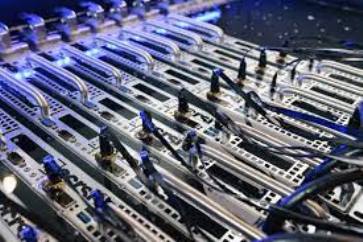- Worldwide Google Trends data shows that searches for high CPU usage reached a four-year high this April.
- High CPU usage, can cause the device to slow down, overheat, and experience reduced performance, is the most commonly noticed sign of cryptojacking.
- Cryptojacking is the unauthorized use of someone else’s computing power to mine cryptocurrencies, often through malware that hijacks a device’s processing capabilities.
Recent data has revealed that a growing number of hackers are shifting their focus from stealing personal data and money to hijacking the computing power of unsuspecting individuals and organizations in order to mine cryptocurrencies.
RELATED: Cyber threats on the rise: Businesses urged to ramp up defences
This practice, known as cryptojacking, involves malware that exploits the processing power of devices, leading to significant impacts on performance, energy consumption, and even potential hardware damage. Unlike traditional cybercrimes that aim to steal data or money, cryptojacking focuses on exploiting a device’s processing power, causing them to slow down, overheat, and consume excessive energy.
The first sign users often notice is unusually high CPU usage. Researchers from CoinJournal.net analyzed worldwide Google Trends data and discovered that searches related to high CPU usage and cryptojacking reached a four-year high in April.
Driven by rising cryptocurrency prices
The rise of cryptojacking can be attributed to the increasing value of cryptocurrencies, coupled with the relatively low risk and high reward these exploits offer cybercriminals.
Unlike ransomware or data breaches, cryptojacking can go undetected for long periods of time, making it an attractive option for hackers. Recent reports have highlighted a staggering 399% increase in cryptojacking incidents, underscoring the urgency of addressing this threat.
Onose Enaholo, Financial Analyst at CoinJournal, said: “Cryptojacking represents a new frontier in cybercrime where the objective is no longer to steal your data or even your money, but to hijack your computer’s processing power. The 399% growth in cryptojacking requires both individuals and organizations to rethink their cybersecurity strategies to include not just the protection of their data, but the protection of their device’s computing power.”
According to a SonicWall threat report, while ransomware attacks have decreased sharply in recent years, cryptojacking incidents have skyrocketed. Bobby Cornwell, SonicWall’s Vice President of Product Security, suggests the recent spike in cryptojacking could be partly due to individuals and organizations reducing their exposure to other types of cyberthreats:
“When we see a 399% spike in global cryptojacking numbers, we can assume cybercriminals are looking for alternative revenue streams.”
A silent threat
CoinJournal’s Rebecca Campbell described cryptojacking as a silent threat to consumers and organizations:
“The silent nature of cryptojacking means it can go undetected for long periods of time, causing significant damage to systems and incurring high operational costs. Regular monitoring and advanced security measures are essential to combat this threat.”
Detection and Signs of Cryptojacked Devices
Identifying a cryptojacked device can be challenging due to the covert nature of this threat. However, there are several telltale signs that can help determine if a device has been compromised:
- Decreased Performance:Devices that are unusually slow, lag, or have frequent crashes may be running unauthorized crypto mining scripts.
- Overheating: Continuous mining causes devices to work at full capacity, leading to overheating. This not only reduces the lifespan of the device but can also pose a fire hazard in extreme cases.
- High CPU Usage:An unexpected spike in CPU usage is a common sign of cryptojacking. Users can monitor their CPU usage via task manager or system monitoring tools to spot any unusual activity.
- Battery Drain:Mobile devices that fall victim to cryptojacking may experience rapid battery drain, as mining tasks require substantial energy.
- Increased Fan Noise: Fans may operate at higher speeds and make more noise as the system tries to cool down the overheated components.
Preventive Measures to Thwart Cryptojacking
To protect devices from cryptojacking, the experts from CoinJournal share the following strategies:
- Use of Security Software:Installing and maintaining up-to-date antivirus software can help detect and remove malicious scripts. Some security programs specifically include protections against cryptojacking.
- Browser Extensions: Utilizing browser extensions that block crypto mining, such as the ‘NoCoin’ feature available in the Opera browser, can prevent malicious websites from hijacking computer resources.
- Ad Blockers: Ad blockers can stop cryptojacking scripts from loading in web advertisements, providing an additional layer of protection.
- Network Monitoring: Organizations should implement network monitoring tools to watch for unusual data flows, which can indicate cryptojacking activities.
- Education and Awareness: Educating employees about the risks of cryptojacking and safe browsing habits, such as not clicking on unknown links or downloading unverified attachments, can significantly reduce the risk of infection.
- Operating System and Application Updates: Regularly updating operating systems and applications can close security loopholes that cybercriminals exploit for cryptojacking.
Courtesy: https://coinjournal.net/































